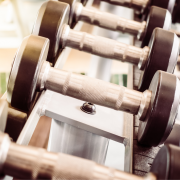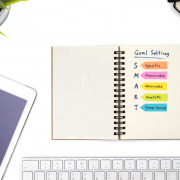Lights, COVID, Action: Behind The Scenes Of Bringing You Digital Fitness Classes
Oh, the challenges and obstacles 2020 (and now 2021) presented for something as simple as taking a group fitness class. We transitioned from the comfort and ease of the group fitness studio to the great outdoors, in both warm and cold weather, to parking lots, garages, living rooms, kitchens – wherever – all in the name of fitness.
As class participants, this shift toward taking class outside the studio may have been different than you expected. Suddenly you’re using household objects in place of dumbbells or maybe taking more bodyweight classes than you normally would. You might have missed the live, energetic experience and camaraderie that comes with in studio live group fitness classes (nothing compares), but regardless, we all had to lean in, figure it out and keep moving.
Related: Stream On: How I Found Value In Leading Classes Online
As instructors, we had so many technical challenges to overcome when we first started streaming, and we had to learn quickly in order to keep you engaged, to keep you moving, and to keep you from not giving up. We know that making time for your workout is half the battle, so when you show up for class (whether in person or digitally), we want to make sure we’re providing you with a quality workout that helps keep you fit and helps give you that mental stability you may have been needing. We instructors quickly learned that this isn’t as easy as popping up the smart phone on a tripod, turning on the overhead lights and pushing “go live”.
Many group fitness instructors are performers – showmen and show-women by nature – and they bring an entertainment element to their program, workout or class. Transitioning to virtual fitness means the stage we once graced (the fitness studio) with its lighting options, mics and professional sound systems, is gone. These elements beyond the fitness program help create an experience for you and keep you addicted to your favorite class(es) and now they’re suddenly gone. So, we, the fitness instructor, put on a couple more hats as the director, the stage manager, the lighting technician, the sound engineer, and oh yeah, the location scout!

We know the top priority here is the content and effectiveness of the workout, but taking class from home can be challenging because of all the distractions and potential loss of focus and drive. By putting on our “production,” we hope to diminish those distractions and make you feel like there’s nothing unusual about doing push-ups while your dog or cat climbs onto your mat.
When streaming live on Facebook and FFC On Demand or other streaming platforms like Zoom and Twitch, there are a lot of technical issues to overcome. Lighting is a big one that includes lots of trial and error: you grab a ring light, use indirect lighting, maybe add some color hues, light from the front, block out back light, and more because a bright, well-lit livestream is less grainy and has more clarity.
Next comes bandwidth, and boy this one is a huge challenge for all workouts – mainly your dance formats – as now we are working to bring you an image synced perfectly with our music. Weak bandwidth or Wifi inhibits a great experience, so what do we do? Well, we get an adaptor and connect our device to ethernet directly, maybe use a faster speed external camera…Perfect!
Related: How To Find The Perfect Workout For You On FFC On Demand
Then we’ve got the sound. What happens when sound travels through a device through wifi? There’s often a lag or delay so we work on feeding the music directly to you with an interface, which can allow for a mic too, or maybe we share our music source directly with you to be better synced and avoid image delays.
And that’s just a touch on the technical!
Teaching live on camera takes a whole different set of skills than teaching live to a group of people who are in the same room. Cuing, exercise selections, body positioning in front of the camera and simply getting a message across can become a challenge. When we are left with no live physical class and a camera lens where you can see us but we can’t see you, a whole new power and performance level must take over.
Believe it or not, our in-person group fitness classes are powered by you, the participants. We feed off your energy and we work harder when we see you push yourselves in class. In a virtual class, our cues must be on point and pre-cuing is a must, including visual cues, motivational cues and choreography cues. Our internal dialog is moving faster than ever to prepare you for the next exercise as our bodies stay in the moment with you doing the current exercise. AND we want to simultaneously hold a conversation with you at home.
While virtual fitness wasn’t how we planned to spend our 2020, we all adapted and grew together. I believe so many of us have grown stronger in many ways over the past year, and now we are able to return to the group fitness studio to safely lead classes. We couldn’t be more grateful that you joined us for class from your living room, and we couldn’t be happier to be able to offer you the live in-person class experience once again. We hope to see you in class soon!

Post written by FFC Group Fitness Manager Dominick DeFranco.




